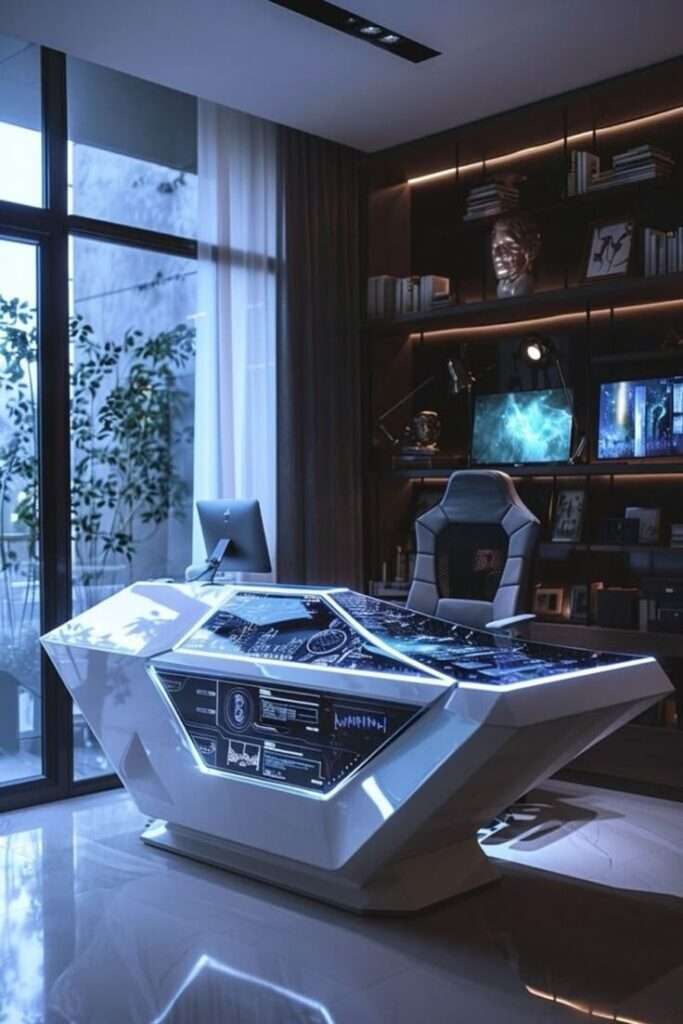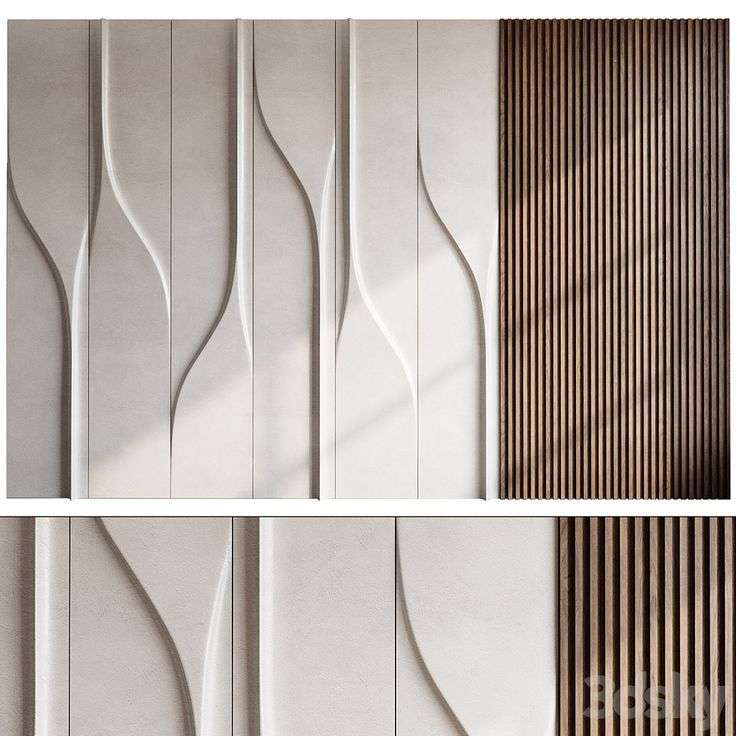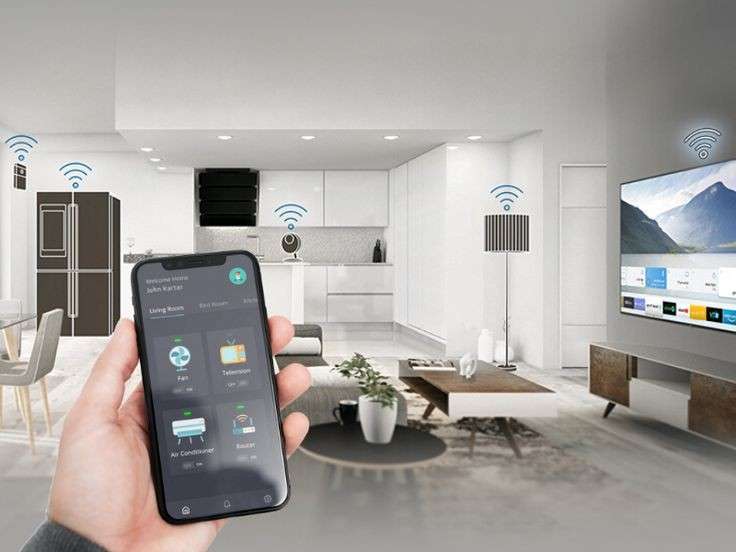
As technology continues to evolve at a rapid pace, it is transforming nearly every aspect of our lives, including interior design. From smart home systems to advanced lighting solutions and interactive furniture, incorporating technology into your interior spaces not only adds convenience and comfort but also enhances the aesthetic appeal and functionality of your home.
Whether you’re designing a futuristic, tech-savvy home or simply adding a few modern touches, integrating technology into your space is becoming increasingly important in creating dynamic, sustainable, and efficient interiors. In this blog, we will explore the various ways technology can be incorporated into interior design and how it can elevate both the functionality and beauty of your home.
1. Smart Home Automation
One of the most significant ways technology has impacted interior design is through smart home automation. With smart devices, you can control nearly every aspect of your home with a tap on your smartphone or a voice command.
- Lighting Control: Smart lighting systems allow you to adjust the brightness, color, and even the ambiance of your lighting from your phone or via voice assistants like Alexa, Google Assistant, or Siri. This flexibility is not only convenient but also helps set the right mood for different occasions. For example, you can dim the lights for a cozy evening or brighten them for reading or work.
- Smart Thermostats: Smart thermostats, such as Nest or Ecobee, allow you to regulate your home’s temperature efficiently. These devices learn your preferences and adjust accordingly, ensuring a comfortable environment while also saving energy and lowering utility bills.
- Voice-Controlled Devices: Smart speakers, such as Amazon Echo or Google Nest, serve as both entertainment hubs and virtual assistants, allowing you to control other smart devices, play music, set reminders, or even ask questions—all with your voice.
Tip: Integrate smart devices that can be controlled remotely or by voice to add convenience and modernity to your home. Consider installing smart locks, security systems, and appliances for a fully automated living experience.
2. Smart Lighting Solutions
Lighting is an essential element in interior design, and with the advancement of technology, lighting solutions have become smarter, more energy-efficient, and versatile.
- LED Lighting: LED lighting has revolutionized how we illuminate our spaces. Not only are LEDs energy-efficient, but they also come in various colors and can be dimmed to create the desired atmosphere. Smart LED bulbs can be connected to apps or voice assistants, offering even more control over your lighting experience.
- Color-Changing Lights: With the use of smart bulbs, you can change the color of your lighting to match your mood or the time of day. For instance, warm white lights for relaxation or cool blue tones for a more energetic vibe. This ability to adjust the lighting creates a dynamic and customizable environment.
- Task and Accent Lighting: Technology also enables more specialized lighting options such as task lighting for focused work and accent lighting to highlight artwork or architectural features. Smart lighting systems can also be programmed to turn on or off at specific times, making your home more energy-efficient.
Tip: Experiment with color-changing smart lights to enhance different moods and moments in your home. For example, use soft lighting for your bedroom and brighter, cooler tones for your kitchen or office.
3. Integrated Entertainment Systems
Home entertainment has come a long way, and integrating technology into your home’s entertainment system is now easier than ever. The days of bulky TVs and tangled wires are over, replaced by sleek, seamless technology that enhances your media experience.
- Smart TVs: Modern smart TVs not only provide high-definition entertainment but also offer internet connectivity, allowing you to stream movies, music, and TV shows directly from services like Netflix, YouTube, and Spotify. The integration of voice control and AI-based recommendations makes for an intuitive user experience.
- Sound Systems: Surround sound systems, smart speakers, and home theaters are now being integrated into home design with minimalist setups. For example, soundbars and Bluetooth speakers can be hidden in furniture or mounted discreetly on walls to maintain the clean aesthetic of your space.
- Hidden Technology: In some luxury interiors, technology is hidden to maintain a seamless look. For instance, TVs can be concealed behind mirrors or art panels, and speakers can be embedded into the walls, leaving no trace of tech clutter.
Tip: Opt for wall-mounted TVs and hidden speakers to create a modern, clean look while keeping technology functional and out of sight.
4. Smart Furniture and Appliances
Smart furniture is designed to be both functional and tech-enabled, offering innovative features that optimize the use of space and improve your quality of life.
- Smart Desks and Chairs: Adjustable standing desks, ergonomic chairs with built-in speakers, or desks that track your posture are great examples of smart furniture that improves productivity and comfort. These pieces not only look stylish but also promote a healthier lifestyle by encouraging movement and good posture.
- Self-Cleaning Surfaces: Some modern furniture pieces, such as dining tables or kitchen countertops, come with built-in self-cleaning technology, which uses UV light to disinfect surfaces. This is especially beneficial in kitchens where hygiene is a priority.
- Tech-Enabled Furniture: Sofa tables, coffee tables, and side tables with built-in wireless charging pads or Bluetooth speakers are becoming popular. These multi-functional furniture pieces allow you to charge your devices or listen to music while keeping your space neat and organized.
Tip: Choose smart furniture that blends with your home’s aesthetic. For example, a sleek, tech-enhanced coffee table or a work desk with a hidden charging station can seamlessly integrate into your decor.
5. Virtual and Augmented Reality for Design
Virtual and augmented reality (VR and AR) are emerging technologies that are changing the way interior designers and homeowners approach space planning and decor.
- Virtual Tours: Before committing to a design or layout, VR allows you to take a virtual tour of a space, offering an immersive experience that helps you visualize how furniture, colors, and finishes will look in your room.
- Augmented Reality Apps: AR apps allow you to place virtual furniture in your space through your smartphone or tablet camera. This helps you experiment with different design ideas, helping you make better decisions without physically moving or buying new items.
Tip: Use AR apps to experiment with various furniture pieces, wall colors, and decor before making a purchase. This allows you to test out design ideas and visualize the final result.
6. Sustainable and Energy-Efficient Tech
Incorporating eco-friendly technology into your home design is an excellent way to reduce your environmental footprint and save on energy costs.
- Energy-Efficient Appliances: From energy-saving refrigerators to dishwashers and washing machines, modern appliances are designed to consume less energy while still delivering optimal performance. Look for appliances with high energy ratings and smart technology that can be controlled remotely.
- Solar Panels: For homeowners looking to integrate sustainability into their design, solar panels are a great addition. They provide a renewable source of energy, reduce dependence on non-renewable resources, and can be easily integrated into the roof design.
- Smart Water Systems: Water-saving technology, such as smart irrigation systems for your garden or smart faucets for your kitchen and bathroom, help conserve water and reduce waste.
Tip: Choose smart appliances that can be programmed or controlled remotely to optimize energy use, such as adjusting the thermostat or turning off lights when not needed.
7. Health and Wellness Technology
The integration of technology in interior design also extends to improving health and wellness within your living spaces.
- Air Purifiers and Humidifiers: With smart air purifiers, you can monitor and control indoor air quality through your phone. These devices help filter out pollutants, allergens, and bacteria, ensuring a healthier environment at home.
- Smart Sleep Systems: Smart mattresses and sleep trackers allow you to monitor your sleep quality, adjusting the temperature, firmness, or even lighting based on your sleep patterns.
- Fitness Tech: Fitness-focused devices, such as smart mirrors or interactive workout equipment, can be incorporated into your home gym. These systems offer live workouts, real-time feedback, and performance tracking to enhance your fitness routine.
Tip: Prioritize wellness technology that integrates seamlessly into your home, such as an air purifier or smart lighting, to create a healthier living environment.
Conclusion
Incorporating technology into interior design is no longer a futuristic concept—it’s now an essential part of modern living. From smart home automation and energy-efficient solutions to innovative furniture and wellness tech, there are countless ways to enhance your home with technology.
By blending technology with thoughtful design, you can create a space that is not only functional but also comfortable, sustainable, and adaptable to your needs. Whether you’re looking for convenience, efficiency, or aesthetic appeal, technology has the power to transform your living space into a smart, dynamic, and connected environment.



